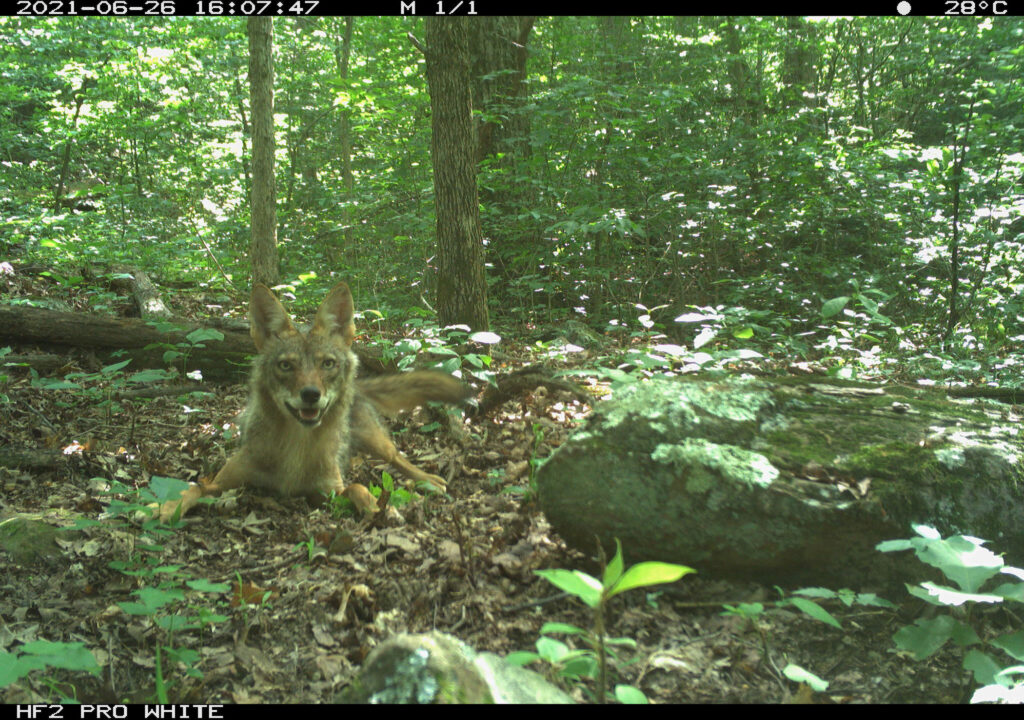Trying to curb coyote populations may be a lost cause, according to a new University of Georgia study.
After careful counting of the animal across the Southeast, researchers found that Eastern coyote populations stabilize faster than they can be reduced.
"In general, predator populations are contentious to manage, but coyotes are a lot harder to manage than a lot of other predators due to their really unique, amazing ability to reproduce. They can bounce back very rapidly," said Heather Gaya, corresponding author of the study and a postdoctoral research associate in the Warnell School of Forestry.
The analysis suggests a need for alternatives when it comes to habitat management and biodiversity.

Coyotes may be more prevalent in wooded areas than previously thought
Using cameras, categorizing different howls and other biological elements, researchers quantified coyotes per square mile in the Savannah River Site and beyond in South Carolina.
They found between 45 and 50 coyotes every 38 square miles. That's more than one coyote per every square mile.
This finding was particularly surprising, the researchers said, because of where SRS is located. Coyotes typically favor open habitats, not forested areas.
"Coyotes have the ability to occupy and adapt to many different habitats, and SRS is apparently one that can sustain a lot of coyotes with enough prey and resources for a long time," said Gino D'Angelo, co-author of the study and an associate professor in the Warnell School.
Part of what drives the coyotes' success is low competition from other species and lots of available prey.
"For over 75 years, we didn't have a lot of apex predators, so coyotes started to fill that void," D'Angelo said. "We had naive prey populations not ready for a predator at such a high abundance. That can have real dire effects on populations that aren't used to predatory pressure."

Population control is costly, unsustainable
The study also included an 18-year analysis of coyote populations and how they changed over time.
Researchers found that despite repeated removal efforts over the years, coyote totals rebounded - and sometimes even spiked - shortly after.
Coyotes from neighboring states also made their way into areas with reduced coyote numbers.
These control methods cost $30,000 to $50,000. So the researchers recommended investing in other solutions. That could look like adjusting hunting regulations or enhancing habitats to support other species under continued coyote presence.
"The cost and man-hours that it takes to actively remove those coyotes is something that's just not sustainable or not practical on a large scale," Gaya said. "I think that when we're managing coyotes, we have to consider if it's worth it to put in all of that time and money for what seems to be short-term gain. And if we're not able to sustain that in the long term, maybe we should be thinking about other options."
This research was also co-authored by UGA alumnus Jordan Youngmann, an associate research scientist for the Odum School of Ecology, and Stacey Lance and John Kilgo.






